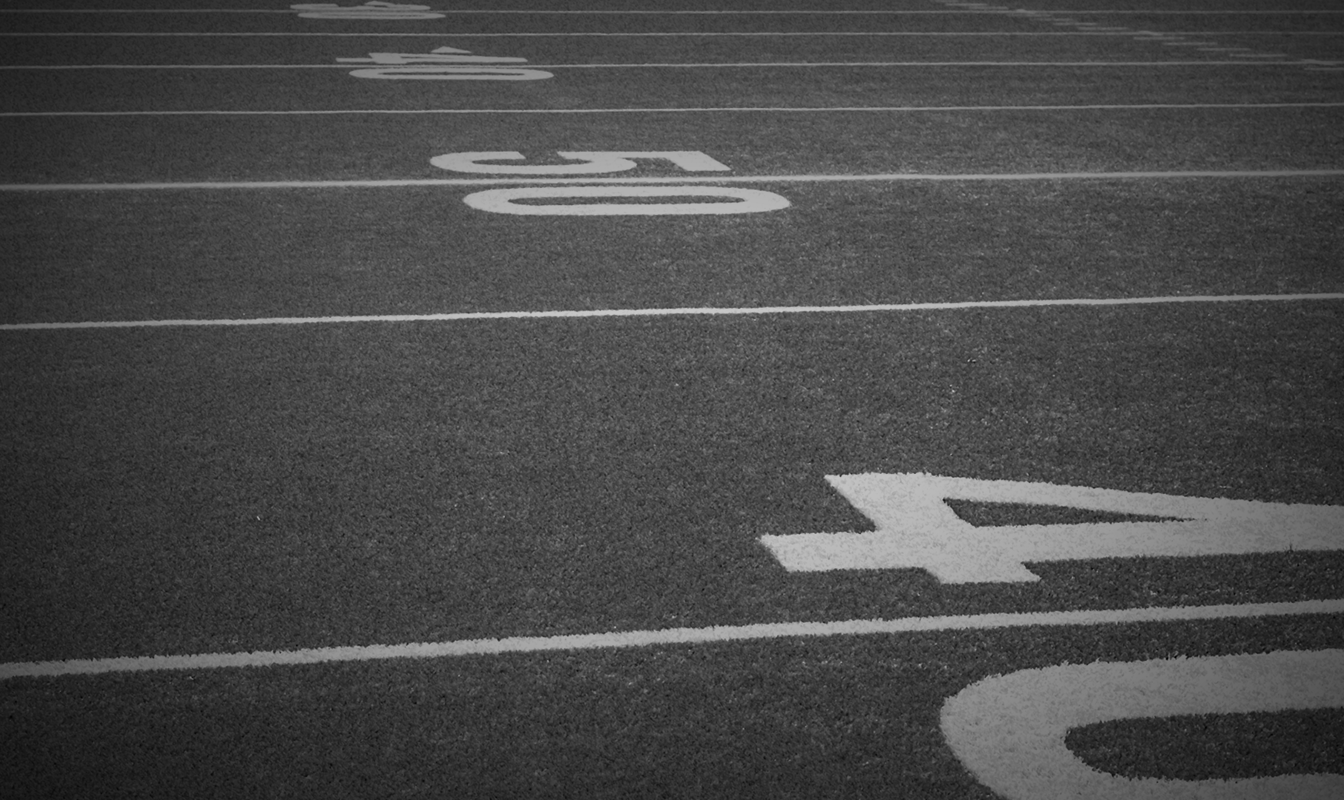The debate around the staying power of the amateurism model in college athletics rages on. One question sits at the center of the debate…should universities pay their student-athletes?
In this analysis, a Pay for Play Prospectus, we spoke with industry experts that included conference commissioners, athletic directors, senior women’s administrators and student-athletes to hear about what they feel might be the unintended consequences of pay for play. We also did some “back of the napkin” number crunching, using publicly-available data from the US Department of Education Equity and the Knight Commission to see the implications of what various pay for play models might have on the current system.

SECTION 1
GHOSTS OF THE FUTURE
THEMES FROM CONVERSATIONS WITH COMMISSIONERS, ATHLETIC DIRECTORS AND STUDENT ATHLETES ON WHAT UNFOLDs IN A PAY FOR PLAY WORLD
Lost opportunities
“A number of schools will have to shrink the rosters of the football team to fulfill Title IX obligations on the women’s side. That means fewer scholarships to help lift people out of poverty. Next to GI bill, athletics are the next biggest source of scholarships.”
“Most football teams today have 100 plus guys reporting for training camp. In a pay for play system, there would be a limit. It could be half or a little more than that. I wonder if the rosters would be more NFL-like?”
“The NCAA was built to make sure that Student-Athletes to get an education. To have an opportunity. It’s just sad how things have progressed to this point.”
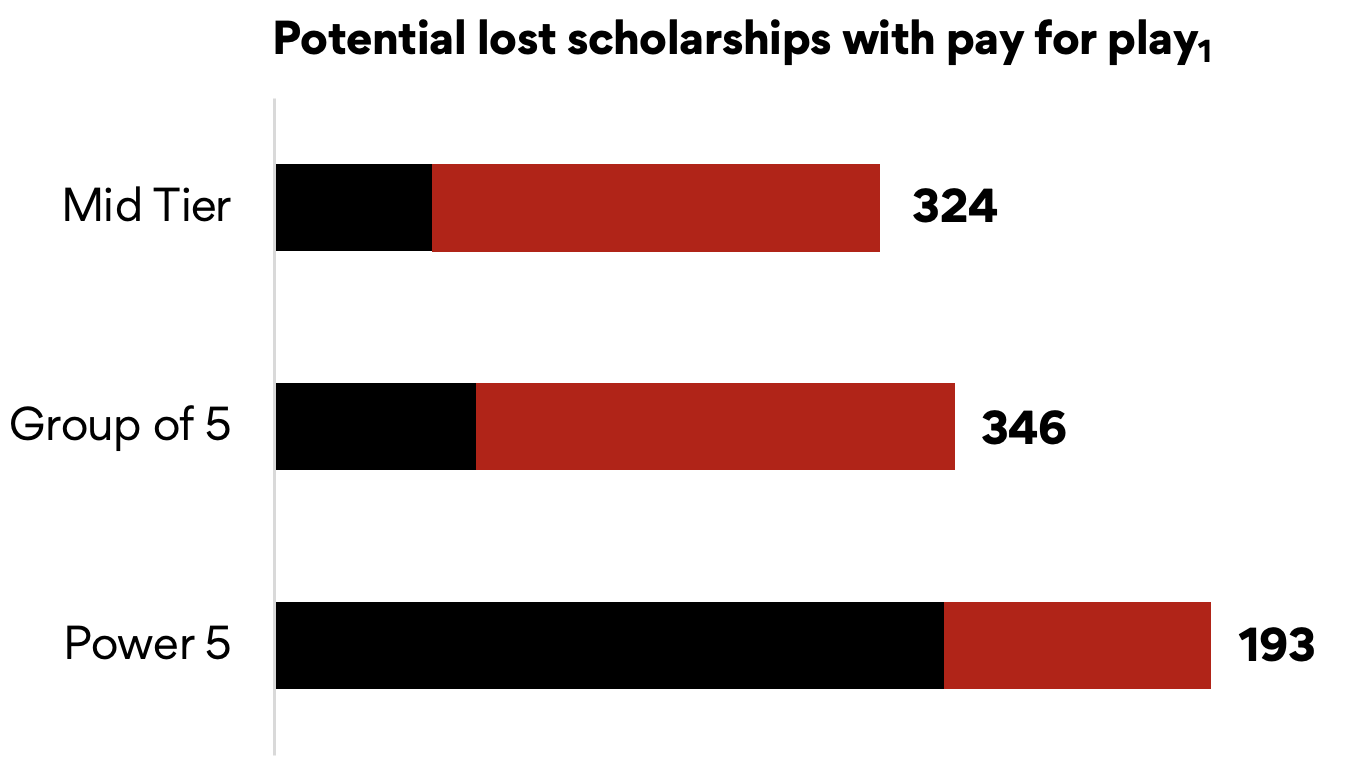
Legal headaches
“There will be an enormous amount of litigation. Title IX. Labor law. It’s going to a bumpy next 3-7 years where all these things are worked out in the courts or arbitration.”
“You’re going to have employment law issues – what are you going to do about workers comp? What’s taxable? Not taxing scholarships made sense when tuition was cheap. Now when you look at the full value of a scholarship plus the added salary on top, you’ll need to pay taxes on it. That’s fine for some, but for the kid coming from an impoverished background with limited financial literacy, this could lead to some potential issues.”
“You’re fired!”
“Most Student-Athletes right now are guaranteed a 4-year scholarship and they aren’t going to lose it based on poor performance. Say goodbye to that in pay-for-play. Just like the pros- if you don’t perform or break a rule in the contract, I’m terminating our agreement.”
“No more hall passes when you’re an employee. You’re expected to perform. If that’s what you want when you get here, god bless you. But that’s a brutal real-world environment.”

Devastation of Olympic sports
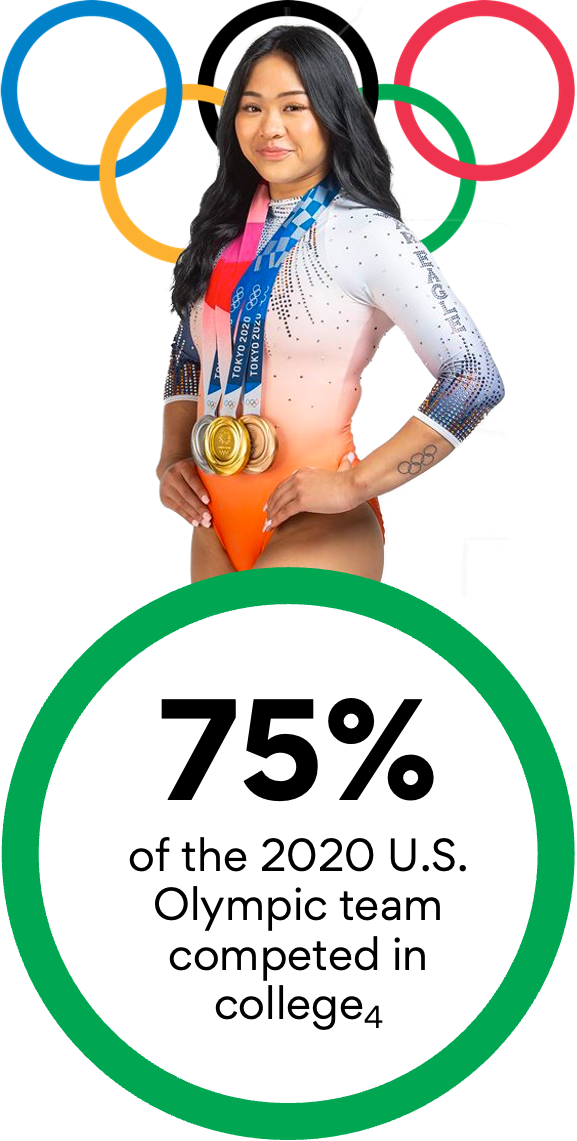
“Why would we get paid as Olympic athletes if we’re losing money for the school. No surprise that we would be the first to go.”
“Auburn isn’t going to be able to provide scholarship support to gymnast Suni Lee. Michigan won’t be able to put resources into training the next Michael Phelps.”
“It’s not just Team USA that will be impacted – it’s athletes from across the Globe. Just look at these last Olympics – you had Sydney McLaughlin from Puerto Rico who won a gold medal and ran at Kentucky, Jacob Dawson who is British, and won a bronze and rows at Washington.”
NFL loses its farm system
“NFL is a huge loser because they will lose the training ground. The number of athletes they are able to scout is going to get narrowed.”
College football becomes the minor leagues
“Go find a bad minor league with minimal set-up and that’s what it will look like for most college campuses that aren’t Texas, Alabama or Oklahoma. Talk to any baseball player in the minors, it’s night and day to college.”
Coaches salaries will be reigned in
“Coaches’ salaries are grotesque and that’s a weakness in the system. Those will definitely need to come down for schools to sustain their athletic departments.”
Say Goodbye to Your Amenities
“Currently on a campuses, there is a wealth of services aimed at assisting student-athletes – therapists, tutors, nutritionists – all that shrinks or go away to make up for budget shortfalls.”
“I wonder what kind of medical support Universities would be prepared to offer in a new system. Also, would athletes be required to take any classes at all?”

Haves and have nots
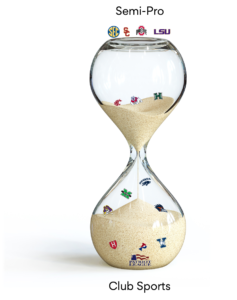
“While 40-50 schools will lead the way, middle to lower tier schools will have to go in a different direction and not participate. They can’t drain their endowments on this.”
“If you think you’re going to the pros – only a few number of schools will attract you. If you want an education, that’s another. Schools will stop conning themselves that they’re in a game that they really are not.”
“This will lead to more parity. With a concentration of more programs in bigger leagues, you’re going to see more 7-4 and 4-7 records.”
Fundraising challenges
“I don’t know if donors will give up their income as freely as they do now. It’s one thing to give a tax-deductible gift when they are helping a student-athlete wind their way through college. But I don’t think they will be as willing to donate to a semi-pro program where athletes are paid. You don’t see many donation programs in the professional ranks.”
 “Notre Dame’s just not prepared to participate in any model where the athlete isn’t a student first and foremost — that’s the hallmark for us. If the entire model were to move toward athletes as employees, we’d head in a different direction. Our president has been clear about that. I’m not articulating a unique position.”
“Notre Dame’s just not prepared to participate in any model where the athlete isn’t a student first and foremost — that’s the hallmark for us. If the entire model were to move toward athletes as employees, we’d head in a different direction. Our president has been clear about that. I’m not articulating a unique position.”
– Jack Swarbrick, Notre Dame Athletic Director
The Title IX Balancing Act
“With big checks going to football and basketball players, you’ll have to balance that out with equal checks to the women’s players because of Title IX. So now instead of a $2 million loss in women’s basketball, you’ve got an even larger loss with added salaries.”
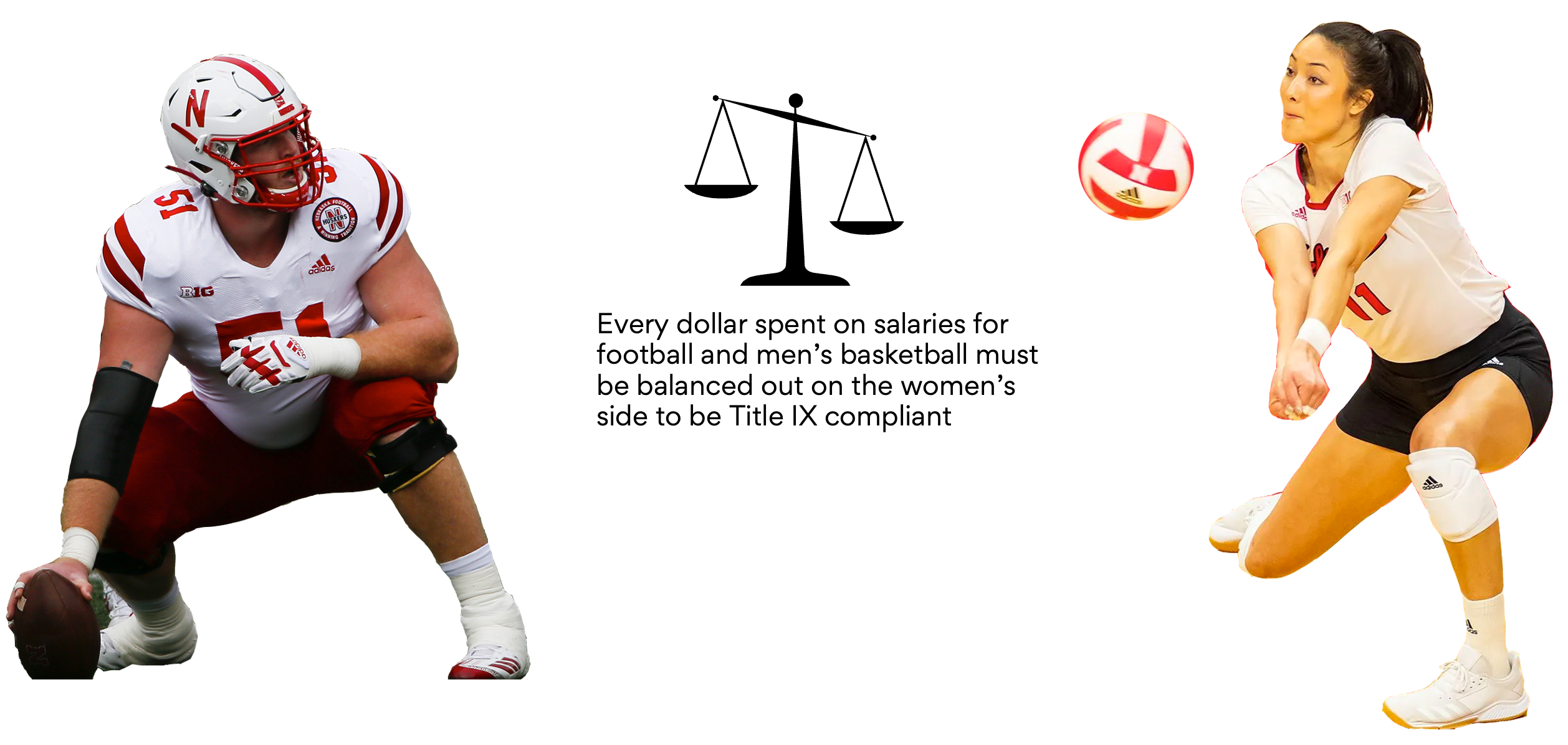
SECTION 2
PAYING SCENARIOS
POPULAR PROPOSALS TO PAY STUDENT-ATHLETES AND HOW THEY WOULD AFFECT THE CURRENT MODEL
1. Open Market
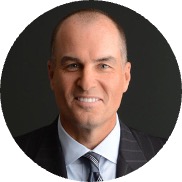 This concept was popularized by ESPN college basketball analyst Jay Bilas, and proposes a free market system in which schools offer up contracts to players for any amount of money.
This concept was popularized by ESPN college basketball analyst Jay Bilas, and proposes a free market system in which schools offer up contracts to players for any amount of money.
As a thought experiment, we looked at the the top five high school football players from 2021 according to 247Sports and speculated what yearly salary they could command in an open market. We took the annual rookie salary of the top NFL draft picks for each position in the last two years and factored the ratio of D1 to NFL athletes to determine market value.
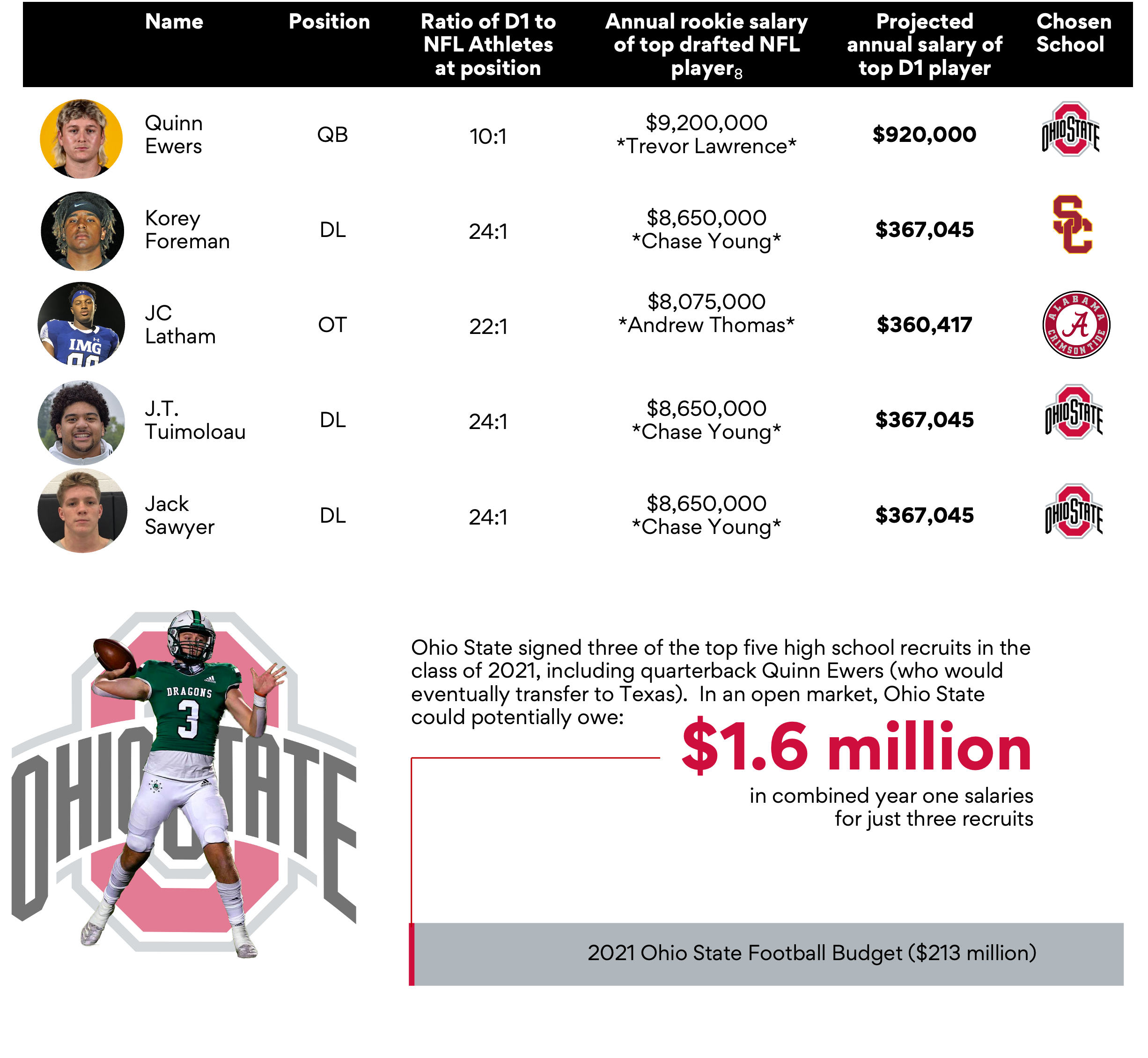
2. Salary Cap Breakdown
Originally proposed by New York Times columnist Joe Nocera in an op-ed published in 2016, this scenario factors in the following parameters:
-
- Salary cap of $3 million for football and $650,000 for men’s basketball
- Minimum salary of $25,000 per player in football and men’s basketball
- 10% of TV revenue distributed by conferences
- 8-year academic scholarships
In the table below, we analyze how a salary cap scenario would play out in three sample sets.

*This scenario assumes that 125 to 143 additional grad students will be on full scholarship*
Now we factor in the added expenditure for paying football and basketball players and how that will affect revenue and deficits for each peer group set moving forward.
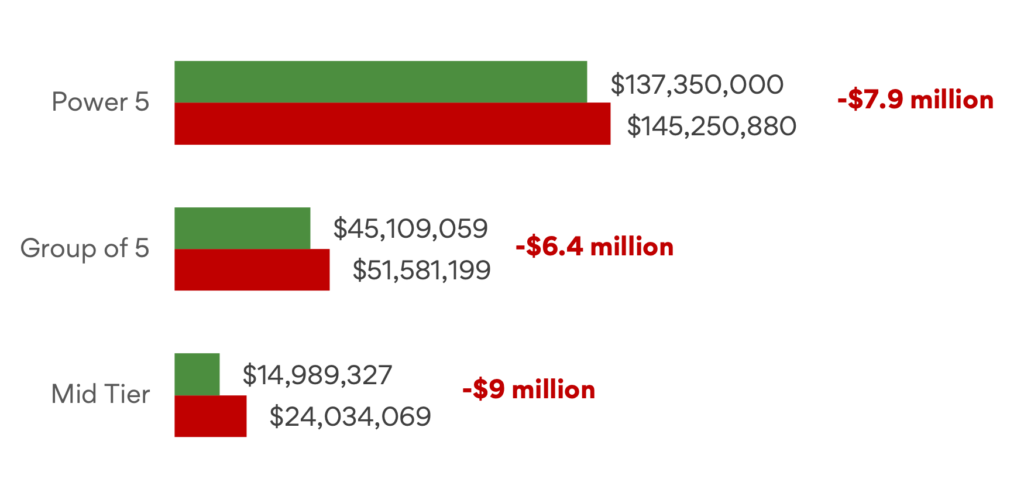
But What About Title IX?
 “The most obvious problem is whether my scheme violates Title IX by carving out football and men’s basketball players for special treatment. My belief is that athletes in the revenue sports play a different role on campus than other athletes: Many of them have been admitted to the university, after all, because they will generate revenue through their play. But I also realize that this is a point that would most likely have to be litigated.”
“The most obvious problem is whether my scheme violates Title IX by carving out football and men’s basketball players for special treatment. My belief is that athletes in the revenue sports play a different role on campus than other athletes: Many of them have been admitted to the university, after all, because they will generate revenue through their play. But I also realize that this is a point that would most likely have to be litigated.”
– Joe Nocera
3. Media Rights Share
Originally hinted at in the listed demands from the Pac-12 We Are United10 group during the summer of 2020, in this scenario, revenue earned from media rights that is distributed among schools by their Conference would be split 50/50, with half divided equally among all student-athletes.
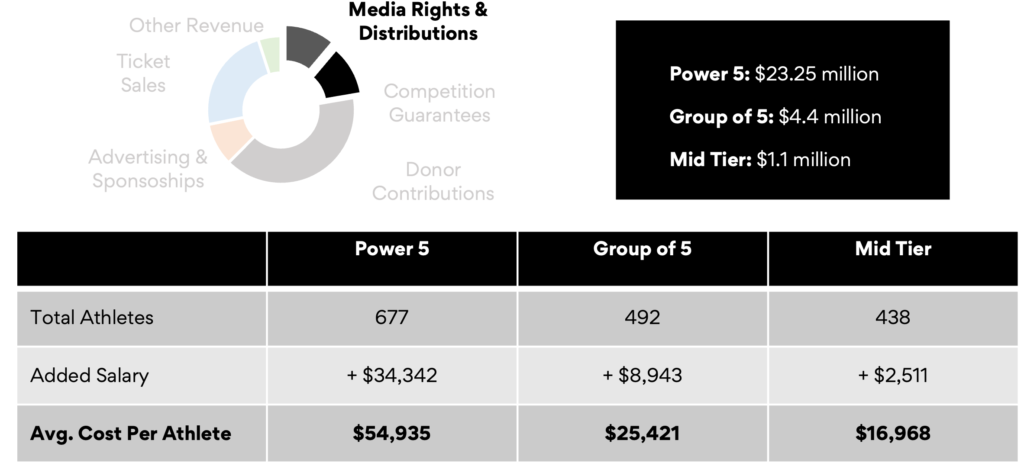
Now we move that 50% of media revenue to the expense column to see how it would affect the bottom line for each peer set group:

Now operating with a deficit, athletic departments would likely have to cut down on the number of scholarship sports they offer – while still maintaining a Title IX balance. Below is a hypothetical look at how many scholarships could potentially be cut. This does not account for staff layoffs or other cost cutting measures.

What’s Next?
Our back of the napkin calculations might not materialize, nor the pay for play models that they illustrate. However this evolves, playing out models in practical ways will be a vital tool in shaping public opinion for and against. So what comes next? Here are four areas we’ll be keeping an eye on:
Labor Litigation
The National College Players Association’s filed complaint with the NLRB in California could result in the NCAA no longer being allowed to limit the amount of money individual schools could pay their athletes.
Alternative Avenues
The newly resurrected XFL announced a closer partnership with the NFL while the NBA’s G League continues to gain prominence. Both could become more enticing avenues for high school players who want to go pro.
Shifting Beliefs
A survey conducted by Marist College in February 2022 revealed a growing shift in younger generations. Of 1,264 adults polled, 70% of adults aged 18-29 and 57% of adults aged 30-44 believe that athletes should be paid.
NIL Reform
The number of third-party entities created to pay players under NIL are growing by the day. But now the NCAA is actively investigating these “collectives” and announced it would reviewing current NIL policies.
